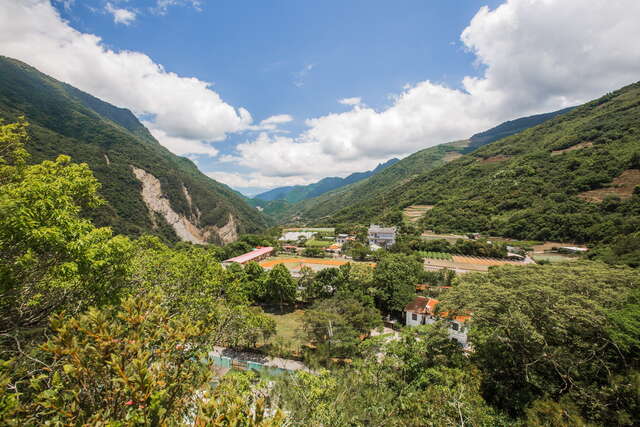Wulu Gorge Introduction
The "Wulu Canyon" features a distinctive S-shaped gorge with colorful rock walls and the clear waters of the Wulu River rushing down. Its majestic canyon landscape rivals that of Taroko National Park, making it one of the eight scenic spots along the Southern Cross-Island Highway. The steep canyon attracts mountain and forest enthusiasts from near and far who come to explore its beauty. Walking on the Tianlong Suspension Bridge to admire the grand Wulu Canyon, or visiting the Wulu Fort to learn about the history of resistance against Japan, followed by a soak at the Liukou Hot Springs or Bishan Hot Springs, allows visitors to experience the tranquil and picturesque atmosphere of the mountains. As you travel along the Southern Cross-Island Highway through Wulu Canyon, you may occasionally see steam rising from the rocky crevices below, with hot springs gushing from the cliffs, leaving behind colorful mineral patterns on the sheer walls in shades of yellow, brown, black, and dark green, resembling natural murals that are breathtakingly beautiful. This rich geothermal resource allows visitors to challenge themselves with river trekking and outdoor hot spring soaking, or simply relax in a hotel’s hot spring during the winter months. The Tianlong Suspension Bridge spans the Wulu River, measuring 110 meters in length and less than 1.5 meters in width, connecting the cliffs on either side of the canyon. It was originally part of the "Guanshan Cross-Mountain Ancient Trail" established during the Japanese colonial period. After crossing the Tianlong Suspension Bridge from the Southern Cross-Island Highway, visitors can embark on a hiking adventure along the ancient trail reconstructed by locals, which is approximately 1,089 meters long and leads back to the Southern Cross-Island Highway, offering an excellent viewpoint overlooking Wulu Canyon.
































